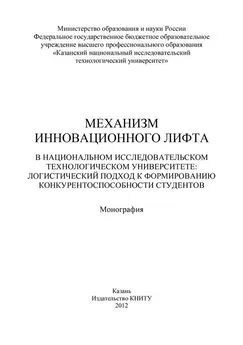Шон Янг - Привычки на всю жизнь [Научный подход к формированию устойчивых привычек]
- Название:Привычки на всю жизнь [Научный подход к формированию устойчивых привычек]
- Автор:
- Жанр:
- Издательство:Манн, Иванов и Фербер
- Год:2018
- Город:Москва
- ISBN:978-5-00117-263-5
- Рейтинг:
- Избранное:Добавить в избранное
-
Отзывы:
-
Ваша оценка:
Шон Янг - Привычки на всю жизнь [Научный подход к формированию устойчивых привычек] краткое содержание
Для всех, кто хочет изменить существующие привычки, приобрести новые и сделать их своей второй натурой.
На русском языке публикуется впервые.
Привычки на всю жизнь [Научный подход к формированию устойчивых привычек] - читать онлайн бесплатно ознакомительный отрывок
Интервал:
Закладка:
‹‹26›› Alfie Kohn, Why Incentive Plans Cannot Work, Harvard Business Review , 1993, https://hbr.org/1993/09/why-incentive-plans-cannot-work.
‹‹27›› Richard A. Guzzo, Richard D. Jette, and Raymond A. Katzell, The Effects of Psychologically Based Intervention Programs on Worker Productivity: A Meta-Analysis, Personnel Psychology 38, no. 2 (1985): 275–291, doi: 10.1111/j.1744–6570.1985.tb00547.x.
‹‹28›› Richard A. Guzzo, Richard D. Jette, and Raymond A. Katzell, The Effects of Psychologically Based Intervention Programs on Worker Productivity: A Meta-Analysis, Personnel Psychology 38, no. 2 (1985): 275–291, doi: 10.1111/j.1744–6570.1985.tb00547.x, Kohn.
‹‹29›› Amy Adkins, U.S. Employee Engagement Holds Steady at 31.7 %, Gallup, May 7, 2015, http://www.gallup.com/poll/183041/employee-engagement-holds-steady.aspx?utm_source=EMPLOYEE_ENGAGEMENT&utm_medium=topic&utm_campaign=tiles.
‹‹30›› Gamification: Engagement Strategies for Business and IT» Gartner, http://www.gartner.com/technology/research/gamification/.
‹‹31›› Gartner Predicts Over 70 Percent of Global 2000 Organisations Will Have at Least One Gamified Application by 2014, Gartner, November 9, 2011, http://www.gartner.com/newsroom/id/1844115.
‹‹32›› Gartner Says by 2014, 80 Percent of Current Gamified Applications Will Fail to Meet Business Objectives Primarily Due to Poor Design, Gartner, November 27, 2012, http://www.gartner.com/newsroom/id/2251015.
‹‹33›› Wupperman Steel, Enterprise Steel Consultancy, last modified February 7, 2015, http://enterprise-gamification.com/mediawiki/index.php?title=Wuppermann_Steel.
‹‹34›› Steve Lopez, Disneyland workers answer to ‘electronic whip’, Los Angeles Times , October 19, 2011, http://articles.latimes.com/2011/oct/19/local/la-me-1019-lopez-disney-20111018.
‹‹35›› Damien Brevers and Xavier Noel, Pathological Gambling and the Loss of Willpower: A Neurocognitive Perspective, Socioaffective Neuroscience & Psychology 3 (September 2013), doi: 10.3402/snp.v3i0.21592.
‹‹36›› David Skorton and Glenn Altschuler, America’s Foreign Language Deficit, Forbes , August 27, 2012, https://www.forbes.com/sites/collegeprose/2012/08/27/americas-foreign-language-deficit/#5796b5ac4ddc.
‹‹37›› Suzie Lechtenberg, Is Learning a Foreign Language Really Worth It? Freakonomics, March 6, 2014, http://freakonomics.com/podcast/is-learning-a-foreign-language-really-worth-it-a-new-freakonomicsradio-podcast/.
‹‹38›› Bryan Caplan, The Numbers Speak: Foreign Language Requirements Are a Waste of Time and Money, Library of Economics and Liberty, August 10, 2012, http://econlog.econlib.org/archives/2012/08/the_marginal_pr.html.
‹‹39›› John Cassidy, The Next Crusade: Paul Wolfowitz at the World Bank, New Yorker , April 9, 2007, http://www.newyorker.com/magazine/2007/04/09/the-next-crusade.
‹‹40›› Theo Merz, Russian commuters win free Metro travel if they can prove physical prowess, The Telegraph , November 8, 2013, http://www.telegraph.co.uk/news/worldnews/europe/russia/10437306/Russian-commuters-win-free-Metro-travel-if-they-can-prove-physical-prowess.html.
‹‹41›› Chris Clackum, Frequent Flyer Miles Going Unclaimed, NECN/ NBC, January 26, 2014, http://www.necn.com/news/new-england/_NECN__Frequent_Flyer_Miles_Going_Unclaimed_NECN-247767111.html.
‹‹42›› Blake Fleetwood, Frequent-Flyer Programs Are Convoluted, Mysterious, and a Maddening Fraud, Huffington Post , May 4, 2011, http://www.huffingtonpost.com/blake-fleetwood/frequentflier-programs-ar_b_856623.html.
‹‹43›› Blake Fleetwood, Frequent-Flyer Programs Are Convoluted, Mysterious, and a Maddening Fraud, Huffington Post , May 4, 2011, http://www.huffingtonpost.com/blake-fleetwood/frequentflier-programs-ar_b_856623.html
‹‹44›› Jed Williams and John Swanciger, Why Small Businesses Should Be Utilizing Customer-Loyalty Programs, Entrepreneur , April 25, 2014, https://www.entrepreneur.com/article/233362.
‹‹45›› Best Buy Increases Loyalty Rewards in Move to Spur Sales. 4-traders, April 3, 2014, http://www.4-traders.com/BEST-BUY-CO-INC-11778/news/Best-Buy-Increases-Loyalty-Rewards-in-Move-to-Spur-Sales16603892/.
‹‹46›› Meredith Derby Berg, Turnaround Tales from JC Penney, Best Buy, AdvertisingAge , February 24, 2014, http://adage.com/article/cmo-strategy/turnaround-tales-jc-penney-buy/291813/.
‹‹47›› Fida Chaaban, Social Entrepreneurship Is on the Rise: Soushiant Zanganehpour’s Advice for ‘Treps Acting as Agents of Change’, Entrepreneur Middle East , October 22, 2015, https://www.entrepreneur.com/article/251981.
‹‹48›› Blake Mycoskie, The Founder of TOMS on Reimagining the Company’s Mission, Harvard Business Review , 2016, https://hbr.org/2016/01/the-founder-of-toms-on-reimagining-the-companys-mission.
‹‹49›› Jeff Chu, Toms Sets Out To Sell A Lifestyle, Not Just Shoes, Fast Company , June 17, 2013, https://www.fastcompany.com/3012568/blake-mycoskie-toms.
‹‹50›› Laura L. Carstensen, The Influence of a Sense of Time on Human Development, Science 312, no. 5782 (2006): 1913–15, doi: 10.1126/science.1127488.
Глава 8. Привычка
‹‹1›› Anna Rose Childress, Ronald N. Ehrman, Ze Wang, Yin Li, Nathan Sciortino, Jonathan Hakun, William Jens, et al, Prelude to Passion: Limbic Activation By ‘unseen’ drug and Sexual Cues, PloS One 3, no. 1 (2008): e1506, doi: 10.1371/journal.pone.0001506.
‹‹2›› Kimberly A. Young, Teresa R. Franklin, David C. S. Roberts, Kanchana Jagannathan, Jesse J. Suh, Reagan R. Wetherill, Ze Wang, Kyle M. Kampman, Charles P. O’Brien, and Anna Rose Childress, Nipping Cue Reactivity in the Bud: Baclofen Prevents Limbic Activation Elicited by Subliminal Drug Cues, Journal of Neuroscience 34, no. 14 (2014): 5038–43, doi: 10.1523/JNEUROSCI.4977-13.2014.
‹‹3›› Gabrielle Giffords, https://en.wikipedia.org/wiki/Gabrielle_Giffords.
‹‹4›› Todd Ackerman, Meet Therapy Team Helping Giffords, Houston Chronicle , November 20, 2011, http://www.chron.com/news/houston-texas/article/Meet-therapy-team-helping-Giffords-2279624.php.
‹‹5›› Bogdan Draganski, Christian Gaser, Volker Busch, Gerhard Schuierer, Ulrich Bogdahn, and Arne May, Neuroplasticity: Changes in Grey Matter Induced by Training, Nature 427, no. 6972 (2004): 311–12, doi: 10.1038/427311a.
‹‹6›› Antonella Gasbarri, Assunta Pompili, Mark G. Packard, and Carlos Tomaz, Habit Learning and Memory in Mammals: Behavioral and Neural Characteristics, Neurobiology of Learning and Memory 114 (October 2014): 198–208, doi: 10.1016/j.nlm.2014.06.010.
‹‹7›› R. B. Zajonc, Feeling and Thinking: Preferences Need No Inferences, American Psychologist 35, no. 2 (1980): 151–175.
‹‹8›› Henry H. Yin and Barbara J. Knowlton, The Role of the Basal Ganglia in Habit Formation, Nature Reviews Neuroscience 7, no. 6 (2006): 464–476, doi: 10.1038/nrn1919.
‹‹9›› G. F. Koob and M. Le Moal, Drug Abuse: Hedonic Homeostatic Dysregulation, Science (New York, NY.) 278, no. 5335 (1997): 52–58.
‹‹10›› G. F. Koob and M. Le Moal, Drug Addiction, Dysregulation of Reward, and Allostasis, Neuropsychopharmacology 24, no. 2 (2001): 97–129, doi: 10.1016/S0893-133X(00)00195-0.
‹‹11›› George F. Koob, Alcoholism: Allostasis and Beyond. Alcoholism, Clinical and Experimental Research 27, no. 2 (2003): 232–243, doi: 10.1097/01.ALC.0000057122.36127.C2.
‹‹12›› George F. Koob, Alcoholism: Allostasis and Beyond. Alcoholism, Clinical and Experimental Research 27, no. 2 (2003): 232–243, doi: 10.1097/01.ALC.0000057122.36127.C2, Zajonc, p. 160.
‹‹13›› A. J. DeCasper and W. P. Fifer, Of Human Bonding: Newborns Prefer Their Mothers’ Voices, Science 208, no. 4448 (1980): 117476, doi: 10.1126/science.7375928.
‹‹14›› R. B. Zajonc, Mere Exposure: A Gateway to the Subliminal, Current Directions in Psychological Science 10, no. 10 (2000): 224–28.
‹‹15›› Jennifer L. Monahan, Sheila T. Murphy, and R. B. Zajonc, Subliminal Mere Exposure: Specific, General, and Diffuse Effects, Psychological Science 11, no. 6 (2000): 462–66, doi: 10.1111/1467-9280.00289.
‹‹16›› David J. Kelly, Paul C. Quinn, Alan M. Slater, Kang Lee, Alan Gibson, Michael Smith, Liezhong Ge, and Olivier Pascalis, Three-Month-Olds, but Not Newborns, Prefer Own-Race Faces, Developmental Science 8, no. 6 (2005): F31–36, doi: 10.1111/j.1467–7687.2005.0434a.x.
‹‹17›› Leslie A. Zebrowitz, Benjamin White, and Kristin Wieneke, Mere Exposure and Racial Prejudice: Exposure to Other-Race Faces Increases Liking for Strangers of That Race, Social Cognition 26, no. 3 (2008): 259–75, doi: 10.1521/soco.2008.26.3.259.
‹‹18›› Lara Salahi, «Meditation Heals Military Vets with PTSD,» ABC News, June 6, 2011, http://abcnews.go.com/Health/Depression/meditation-heals-military-vets-ptsd/story?id=13756395.
‹‹19›› Michael Christopher, A Broader View of Trauma: A Biopsychosocial-Evolutionary View of the Role of the Traumatic Stress Response in the Emergence of Pathology And/Or Growth, Clinical Psychology Review 24, no. 1 (2004): 75–98, doi: 10.1016/j.cpr.2003.12.003.
‹‹20›› Emily A. Holmes, Ella L. James, Thomas Coode-Bate, and Catherine Deeprose, Can Playing the Computer Game ‘Tetris’ Reduce the Build-Up of Flashbacks for Trauma? A Proposal from Cognitive Science, PLOS ONE 4, no. 1 (2009): e4153, doi: 10.1371/journal.pone.0004153.
‹‹21›› Sara W. Lazar, Catherine E. Kerr, Rachel H. Wasserman, Jeremy R. Gray, Douglas N. Greve, Michael T. Treadway, Metta McGarvey, et al, Meditation Experience Is Associated with Increased Cortical Thickness. Neuroreport 16, no. 17 (2005): 1893–97.
‹‹22›› Richard J. Davidson, Jon Kabat-Zinn, Jessica Schumacher, Melissa Rosenkranz, Daniel Muller, Saki F. Santorelli, Ferris Urbanowski, Anne Harrington, Katherine Bonus, and John F. Sheridan, Alterations in Brain and Immune Function Produced by Mindfulness Meditation, Psychosomatic Medicine 65, no. 4 (2003): 564–70, doi: 10.1097/01.PSY.0000077505.67574.E3.
‹‹23›› Emma M. Seppala, 20 Scientific Reasons to Start Meditating Today, Psychology Today , September 11, 2013, https://www.psychologytoday.com/blog/feeling-it/201309/20-scientific-reasons-start-meditating-today.
‹‹24›› Eileen Luders, Arthur W. Toga, Natasha Lepore, and Christian Gaser, The Underlying Anatomical Correlates of Long-Term Meditation: Larger Hippocampal and Frontal Volumes of Gray Matter, NeuroImage 45, no. 3 (2009): 672–78, doi: 10.1016/j.neuroimage.2008.12.061.
Читать дальшеИнтервал:
Закладка:
![Обложка книги Шон Янг - Привычки на всю жизнь [Научный подход к формированию устойчивых привычек]](/books/1096015/shon-yang-privychki-na-vsyu-zhizn-nauchnyj-podhod-k-fo.webp)








